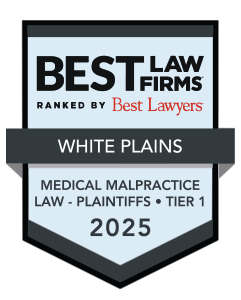The New York Serious Injury Threshold is a legal standard that determines whether an individual injured in a motor vehicle accident can pursue a personal injury lawsuit against another party. The New York Serious Injury Threshold is a legal standard that determines whether an individual injured in a motor vehicle accident can pursue a personal injury lawsuit against another party. Consulting a Westchester County medical malpractice lawyer or a White Plains medical malpractice lawyer can help you understand how this threshold might apply to your case and the legal options available to you.
The Purpose of the Serious Injury Threshold
The serious injury threshold serves as a gatekeeping mechanism, allowing lawsuits only in cases involving significant harm. Under New York’s no-fault insurance system, individuals must typically seek compensation for medical expenses and lost wages through their own insurance providers, regardless of who was at fault for the accident. However, if an injured party’s injuries meet the serious injury threshold as defined by New York Insurance Law § 5102(d), they may file a lawsuit to seek additional compensation for pain and suffering or other non-economic damages. This approach strikes a balance between ensuring swift compensation for minor injuries and reserving legal proceedings for more severe cases.
Defining a Serious Injury
New York Insurance Law § 5102(d) provides a specific definition of a serious injury. To meet the threshold, a “(d) “Serious injury” means a personal injury which results in
- death;
- dismemberment;
- significant disfigurement;
- a fracture; loss of a fetus;
- permanent loss of use of a body organ, member, function or system;
- permanent consequential limitation of use of a body organ or member;
- significant limitation of use of a body function or system; or a
- medically determined injury or impairment of a non-permanent nature which prevents the injured person from performing substantially all of the material acts which constitute such person’s usual and customary daily activities for not less than ninety days during the one hundred eighty days immediately following the occurrence of the injury or impairment.”
Proving a Serious Injury
Meeting the serious injury threshold requires substantial evidence. Plaintiffs (injury victims) must provide medical documentation, expert testimony, and other relevant records to prove that their injury meets one or more of the statutory categories. Common forms of evidence include:
- Medical imaging, such as X-rays, MRIs, or CT scans
- Testimony from treating physicians or medical experts
- Detailed medical reports outlining the nature, extent, and long-term impact of the injury
- Employment records or affidavits to establish how the injury has affected daily activities or the ability to work
Challenges in Serious Injury Cases
Insurance companies and defense attorneys often challenge claims that an injury meets the serious injury threshold. They may argue that the injuries are pre-existing, minor, or unrelated to the accident. Additionally, they may dispute the severity or long-term impact of the injuries. To overcome these challenges, plaintiffs should work with an experienced New York personal injury attorney who can build a strong case using credible evidence and expert opinions.
How Does the Serious Injury Threshold Impact Compensation?
If an injury meets the serious injury threshold, the injured party can file a lawsuit to seek damages beyond what is available through no-fault insurance. These damages can include:
Pain and Suffering: Compensation for physical pain, emotional distress, and reduced quality of life.
Future Medical Expenses: Costs for ongoing treatment, rehabilitation, or surgeries.
Loss of Earning Capacity: Compensation for the inability to work or diminished earning potential. New York does not have a cap on damages. In other words, there are no limits on the amount of compensation you can recover.
 Because Relationships Matter
Because Relationships Matter 

















